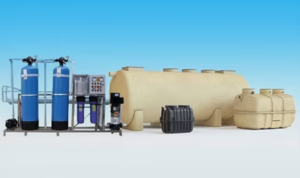
With more and more water shortage being a problem the world has never been more concerned with sustainable solutions to sanitation. Commercial buildings, hotels, schools and other public facilities have thousands of liters of water being used on a daily basis, with much of it going to waste on conventional flush urinals.
In order to overcome this, present-day architects and facility managers are moving towards environmentally-friendly urinals and urinal systems that use less water, thus transforming the manner in which restrooms are used, as well as saving valuable natural resources.
The Issue with regular Urinals.
An average urinal flush consumes 2- 4 liters of water at a time. This may equate to tens of thousands of liters wasted each month in a facility with high traffic just to eliminate urine that can be very easily dealt with without water.
This improved usage does not only drain local water resources, but also raises operation costs and wastewater treatment expenses. Hotels, malls, and airports with inefficient systems can consider almost 3040 percent of the overall water use, specifically in the areas of the restroom.
The necessity of sustainable solution gave rise to the design of environmentally friendly and water saving urinal system -s technologies that are developed to fulfill hygiene without losing on performance.
What are Green Urinals?
They usually include new sealing technology, bio-cartridges, or odor-lock that block smell without necessarily using flushing water.
The environmentally-friendly urinals can be:
Waterless urinals: It is a urinal that does not use any water but closes the odors by the sealing liquid or mechanical valve.
- Low-flush urinals: Consume less than 0.5 liters of water per flush – down to 90 percent less than conventional urinals.
- Smart sensor urinals: It flushes automatically and as such, you save on unnecessary water wastage.
These systems suit the facilities that maintain sustainability, hygiene and cost effectiveness.
Advantages of the Eco-Friendly and Water-Saving Urinal Systems.
1. Massive Water Conservation
The greatest benefit is water savings. By installing water-saving urinal systems in the place of conventional urinals, it is possible to lower the amount of water used per urinal per year by up to 150,000 liters/per urinal, in high-traffic locations.
This helps cut utility bills, as well as help toward larger water conservation objectives, which are necessary in the drought-prone areas.
2. Odor-Free Technology
The contemporary eco- urinals are designed with bio- blocks or sealant traps or air tight membranes in order to avoid foul odor. They are made to be used continuously without the need to use chemical scents and continuous flushing.
3. Highly Maintenance and Operation Costs.
These systems do not maintain a flush valve or cisterns hence fewer mechanical parts are needed to maintain or replace. The units are fresh and hygienic due to regular cleaning using non-acidic cleaners that are eco-friendly.
4. Environmental Benefits
Eco urinals significantly reduce the amount of wastewater that is produced, therefore, reducing the burden that municipal sewages put on the city. They also reduce the carbon footprint of the process of pumping water, treating water, and disposing water.
5. Higher Hygiene and User Interface.
Touchless design, antibacterial surfaces, and cutting-edge trap technologies keep the area clean and minimize the transmission of germs an important attribute to offices, hospitals, and restrooms used by people.
The mechanism of water-saving urinal systems.
The principle of operation of a water-saving urinal system is determined by the existing technology, but as a rule, they are based on the following principles:
Sealing Liquid System: The liquid of light density, called Liquid system, covers the urine with a sealed layer that prevents odor but lets the liquid flow into the system.
Mechanical Valve System: It is an automatic valve that closes as urine enters it and closes as soon as it is used to avoid odor backflow.
Bio-Enzymatic Cartridges: These have enzymes and bacteria that decompose uric acid and organic matter that keep the system clean and without smell.
Smart Flush Sensors: Sense the usage and flush away just a small amount of water when it is needed to maintain the best balance between hygiene and conservation.
All these systems are practical in offering a balance between performance, sustainability and hygiene.
The most appropriate uses of green Urinals.
- Eco- friendly urinals and water saving systems can be implemented in numerous industries:
- Hotels and Resorts: Have luxurious hygiene conditions, have a green certification.
- Corporate Offices: Encourage sustainable operations of the workplace and cut down on water bills.
- Airports and Malls: Process very high number of users and very little servicing.
- Educational Institutions: Educate on environmental responsibility and reduce the cost of operation.
- Hospitals and Healthcare Centers: Take care of the cleaning compliance and reducing the risk of cross-contamination.
This combination of systems demonstrates an actual desire of organizations to care about the environment and sustainability of their operations.
Installation and Maintenance services.
Select Certified Products: Select urinals that have been tested in terms of their performance, odor control, and water efficiency.
- Apply Compatible Cleaners: It is important to use the enzyme based cleaning products, which are eco-friendly in order to ensure that the components of the urinal are protected and that hygiene is maintained.
- Train Housekeeping Staff: Good maintenance will guarantee exhaustive performance and breath-free functioning.
- Periodic Servicing– Clean filters periodically: Change sealing liquids or bio-cartridges according to manufacturer instructions.
Periodic maintenance will maintain the urinals to remain environmentally friendly and save water in the long term.
Green Certification and Sustainability.
The green building certifications that can be added with the installation of water-saving urinal systems include:
- LEED (Leadership in Energy and Environmental Design)
- IGBC is an abbreviation for Indian Green Building Council.
- Environmental Management Standards ISO 14001.
These systems reduce waste in terms of water usage, dependency on chemicals, and maintenance, which makes them fully compliant with the corporate ESG (Environmental, Social, and Governance) objectives.
FAQs
Q1. What level of water saving are environmentally friendly urinals capable of in a year?
Each unit can save 100,000150,000 litres of water in a year relative to traditional flush urinals.
Q2. Do waterless urinals create odor problems?
No. Waterless urinals can be kept in a hygienic state and as such, they do not produce any odor at all due to the sealing of liquids and bio-cartridge technology.
Q3. Will eco-friendly urinals be appropriate in high-traffic restrooms?
Yes. They are specially made to suit the busy conditions such as airports, malls, and office buildings.
Q4. What are the cleaning agents to be used?
Always apply non-acid cleaners, which are environment-friendly to avoid damage to trap seals and long-lasting hygiene.
Q5. What about water-saving urinals, would that allow the achievement of the sustainability certification?
Absolutely. They are used in the points of LEED and IGBC certification through water-saving and wastewater-reduction.
Conclusion
The introduction of urinals and water chi-saving urinal systems are a significant move toward eco-friendly urinals.
The installation of these systems at hotels or offices or schools is not only a cost-saving act, but it also makes a considerable contribution to the green planet.











